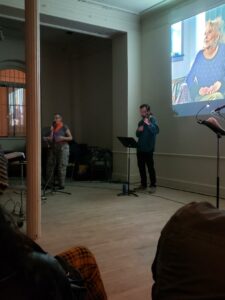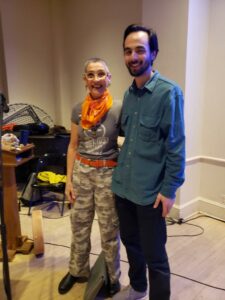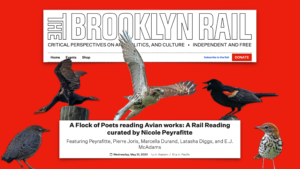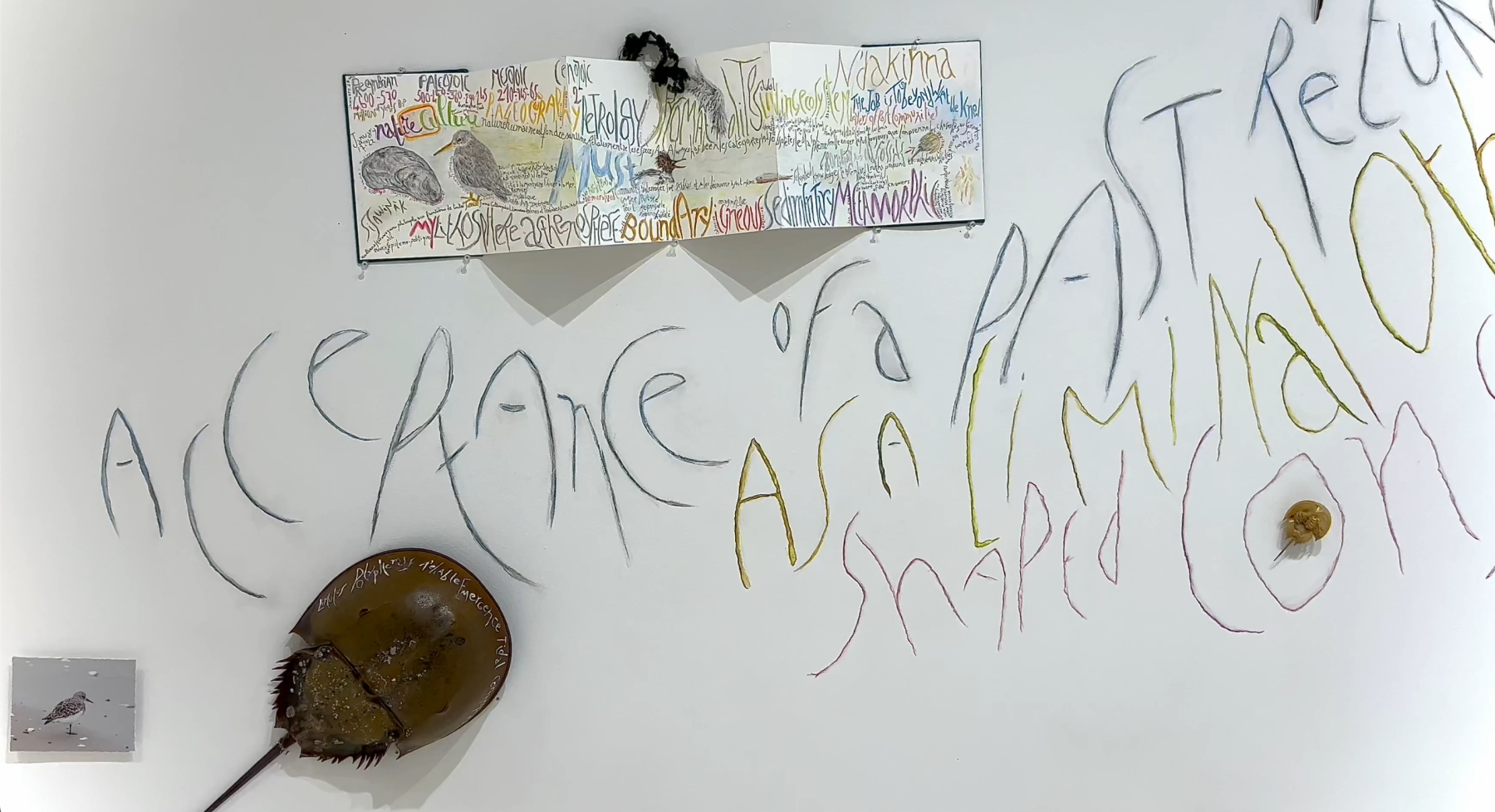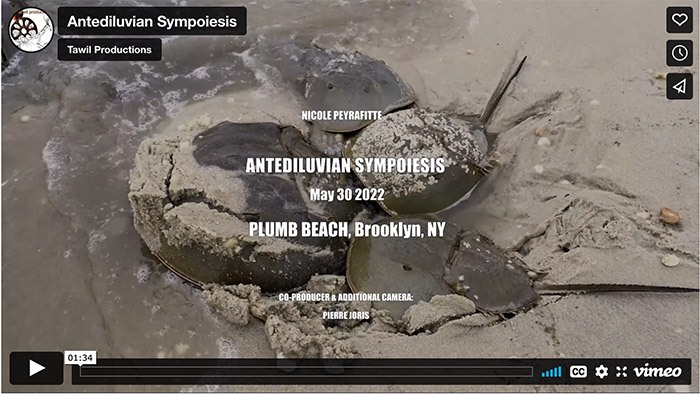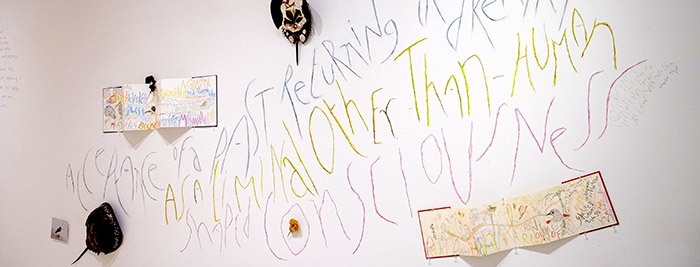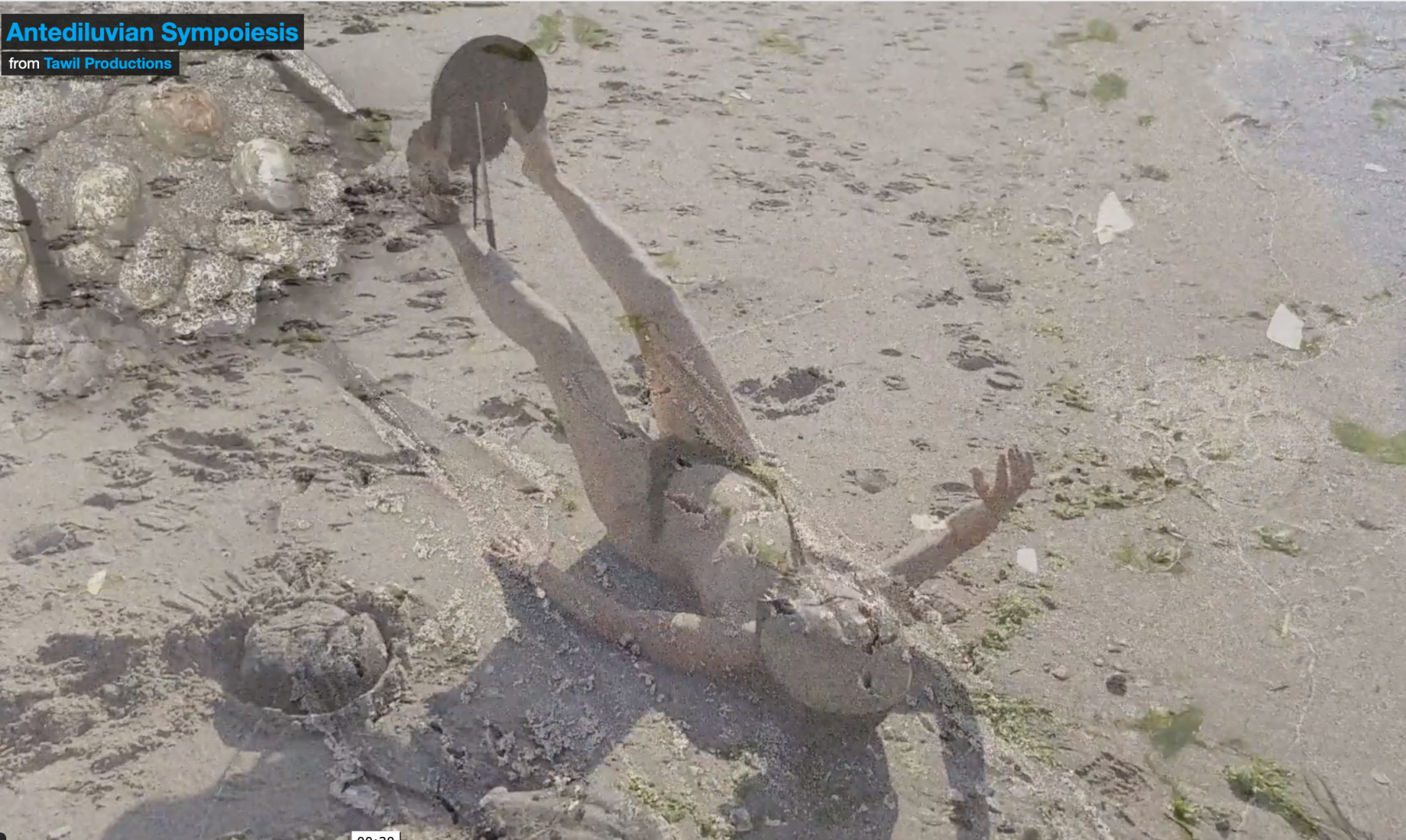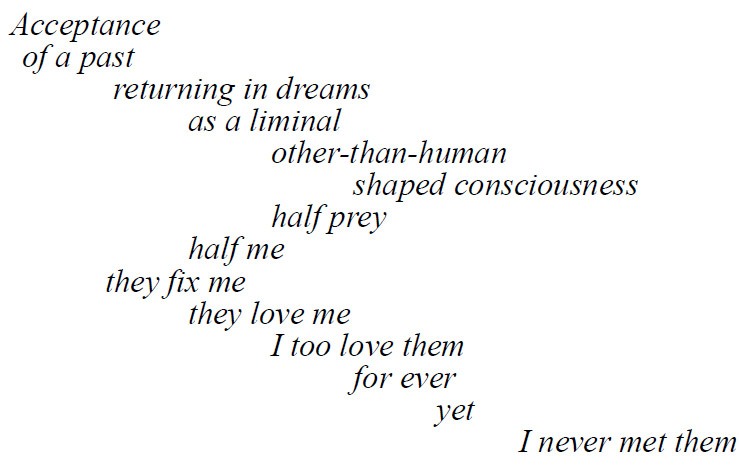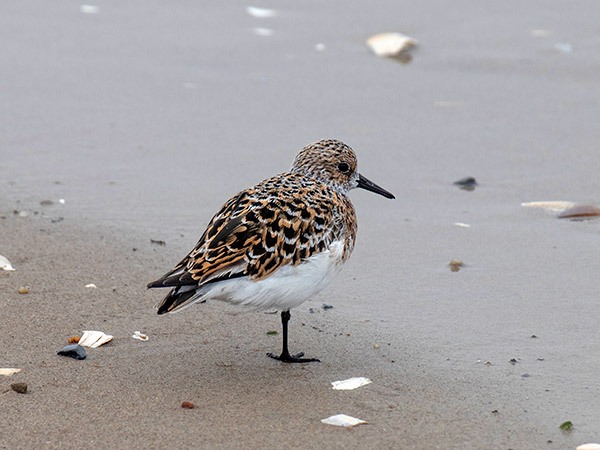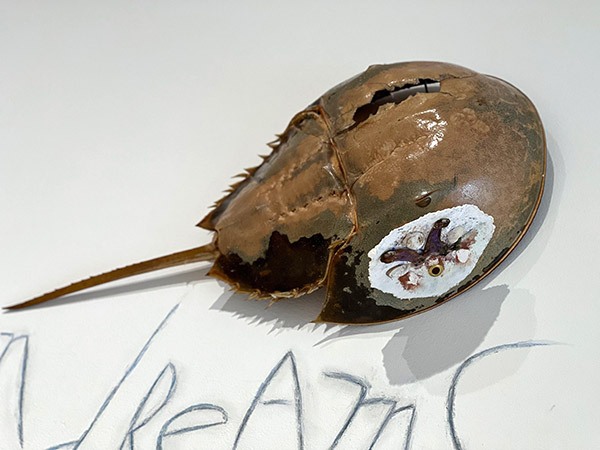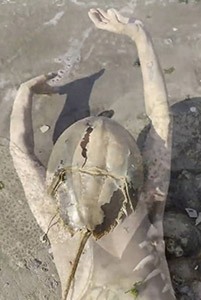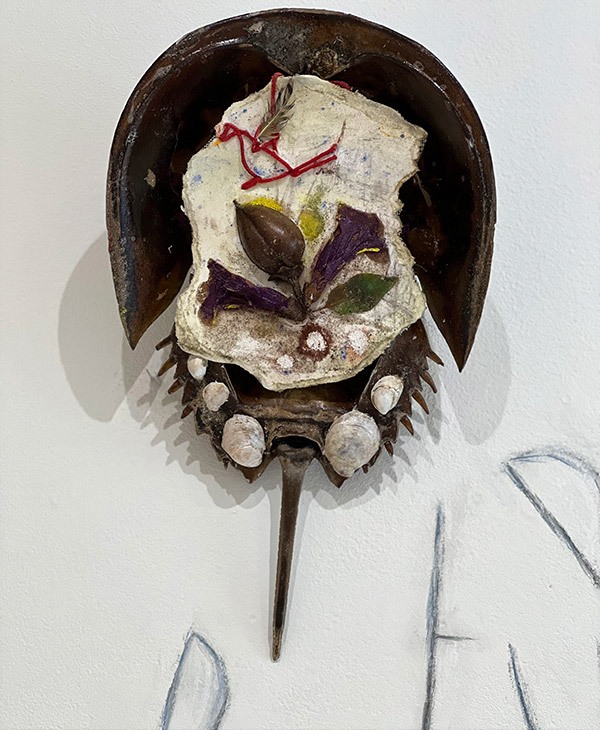A film by:
Nicole Peyrafitte
Pierre Joris & Miles Joris-Peyrafitte
Runtime: 33″07′
2024 Version (footage from November 2012 & June 2013)
In 2012 Pierre Joris & I had the idea of making a short film about Gerrit Lansing & his work. We went up to Gloucester that November 2012 to visit Gerrit who welcomed the idea. We started documenting. Then in June 2013 we came back with much better equipment & with our son Miles Joris-Peyrafitte, who was then a film student at Bard College. We put together an early draft of the film, but realized there wasn’t enough material to make a feature documentary. We would need to come back to shoot more.
Gerrit saw a rough cut and he thought it wasn’t crazy enough! So there was more filming & thinking to do. But we were never able to get around to it as life scattered the three of us in many directions …Then Gerrit’s passed in 2018 & the project went dormant until we decided to come & spend some time in Gloucester this May (2024). We had not returned to Gloucester since Gerrit’s memorial.
Because this place and its people always gave so much to us, we didn’t want to come back empty-handed. It was time to share what we had. Though we realize the footage we have is not adequate to make a proper documentary, we think these recordings will be valuable to Gerrit’s friends, to scholars, & to poetry aficionados.
The footage above, Crystals of Times, is all from 2012 & 2013 & contains mostly readings by Gerrit of his poetry.
It was shot at a number of his favorite places in & around Gloucester and includes footage of a reading he gave while visiting Thorpe Feidt in his studio, with some fascinating banter between Thorpe & Gerrit.
While in Gloucester we decided to screen the footage I had reworked from the 2012/2013 visits, while also sharing a few videos of memorabilia from 2001, a slide-show of photos of Gerrit’s house from 2012 & 13, and Pierre would read the opening of his essay on Gerrit. You will find all this material on this page.
We deeply thank Jim Dunn for organizing the first screening of Crystals of Time at Paul Cary Goldberg’s studio; we are very grateful to Jim & Paul for setting up this event so efficiently & generously. We thank all who came, both old friends & new aficionados whose reception was so heartwarming & confirmed that this material was worth sharing & circulating. We also thank John & Cecilia for welcoming us at their/Gerrit’s house, Caleb Murphy for opening the archives of Hammond Castle & David Rich for writing a beautiful obit on the Gloucester Times that we used as biographical info in the film.
Below are additional materials we showed at the screening, plus Pierre’s complete essay on Gerrit (he read only a short section that evening). This page will evolve as we process more material from our archives.
Gerrit Lansing’s spirit runs deep in all those he has touched in person or through his poetry. We will always sense his aura upon us.
Footage shot when Pierre Joris & Nicole Peyrafitte came to visit Gerrit in the summer of 2001: Nicole had recently gotten a video camera, was still learning, so it is not very good quality but we think it has some sentimental value, as least for us! & also good info.
The 4 sections are:
1: Gloucester Beach
2: Plumb Island
3: Visit to Olson’s grave
4: Dogtown Commons with Joe Torra & Patrick Doud & a quick shot of the dinner with the same + Amanda & James Cook
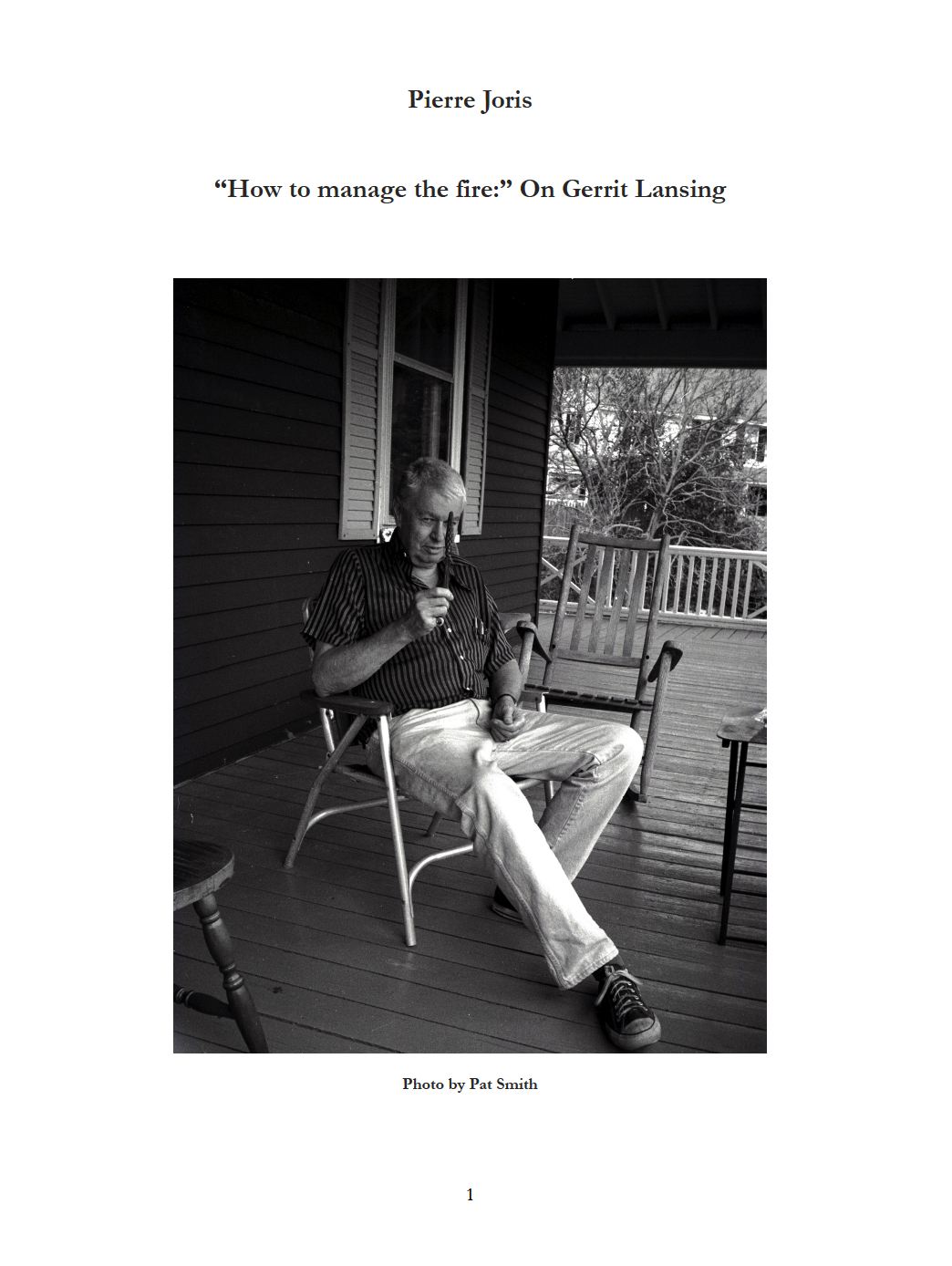
Pierre Joris’ essay: Gerrit Lansing: “How to Manage the Fire”
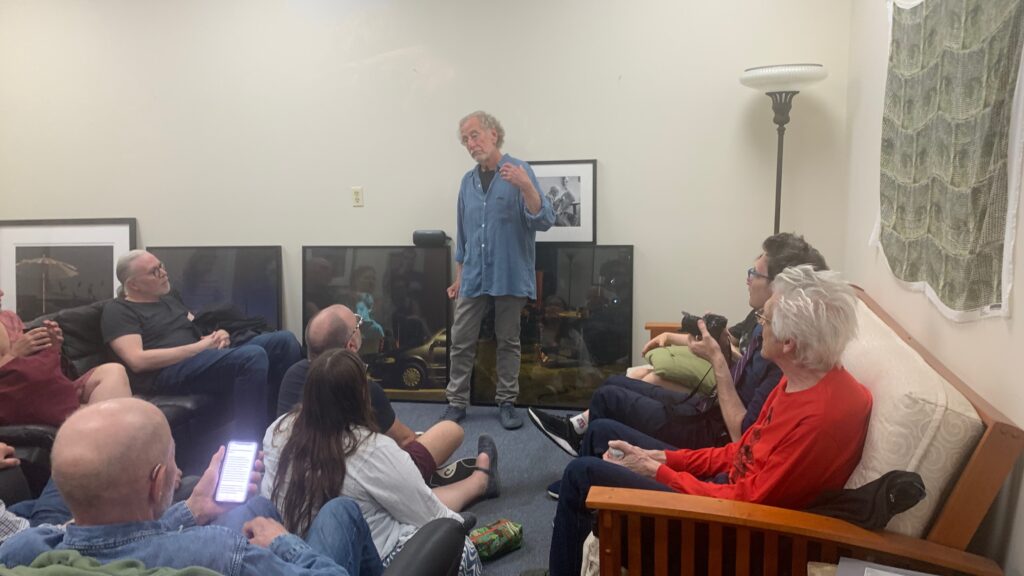
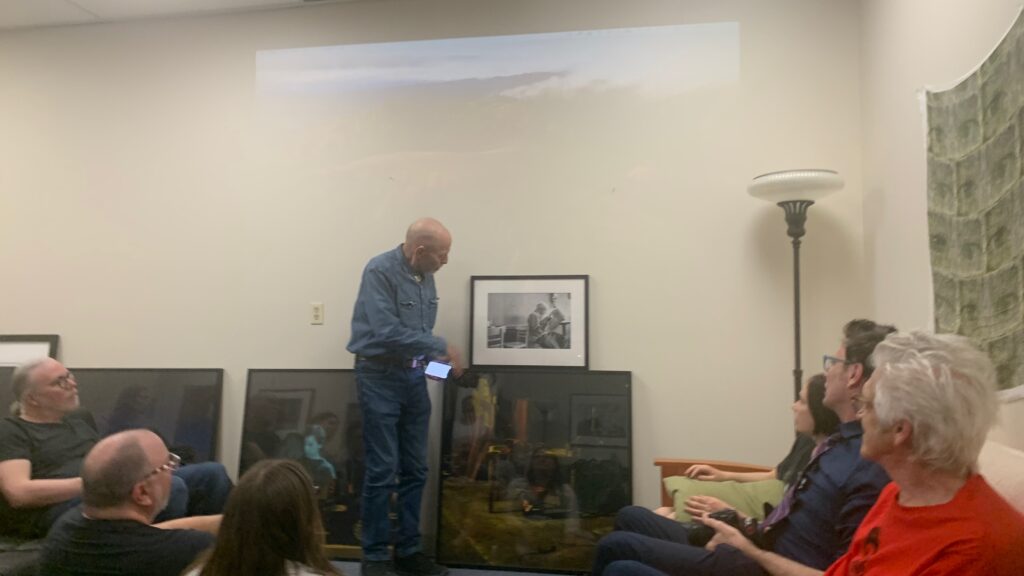
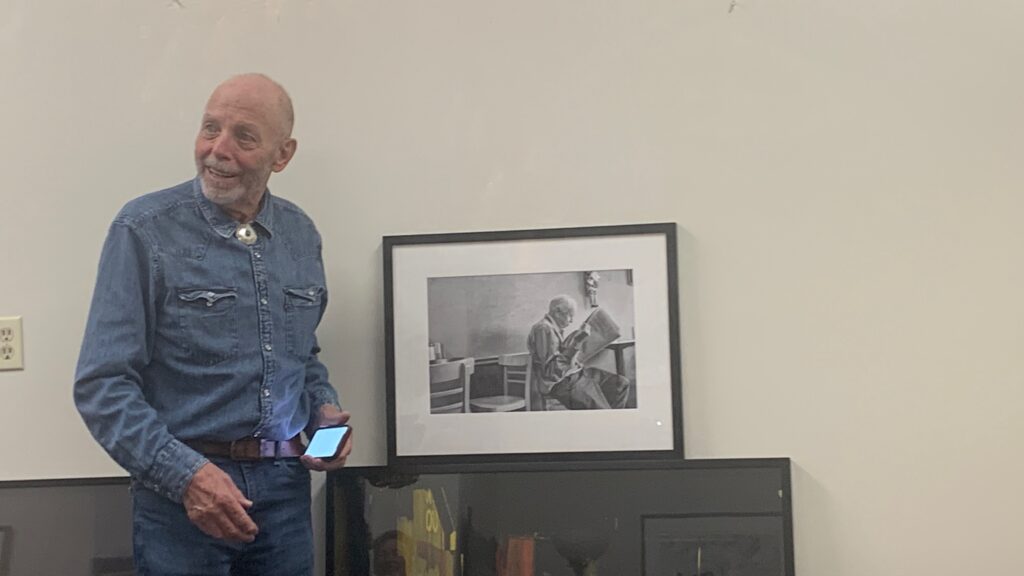

Screening at Paul Cary Goldberg’s studio.
Photographs Jim Dunn
Gloucester, MA, 05/22/2024
some Links:
on Jacket 2:
— Charles Bernstein Gerrit Lansing on Close Listening
— For Gerrit Lansing @ 75 (2003) Susan Bee & Charles Bernstein
— More on jacket 2 here
— Gerrit Lansing Memorial Reading in Gloucester 2/25/2018
at The Woodberry Poetry Room, Harvard University:
— WPR recording with Ruth Lepson 11/10/2015
— ORAL HISTORY INITIATIVE: On John Wieners 10/21/2015
— REEL TIME: On Stephen Jonas (with Joseph Torra) |
— RECONFIGURING ROMANTICISM: A Reading and Discussion of Experimental Poetics 03/30/2009




